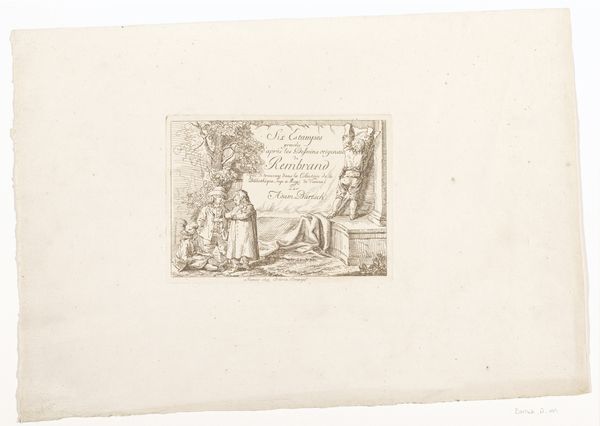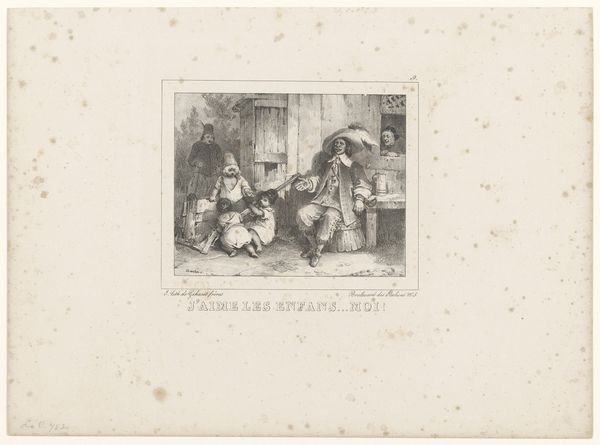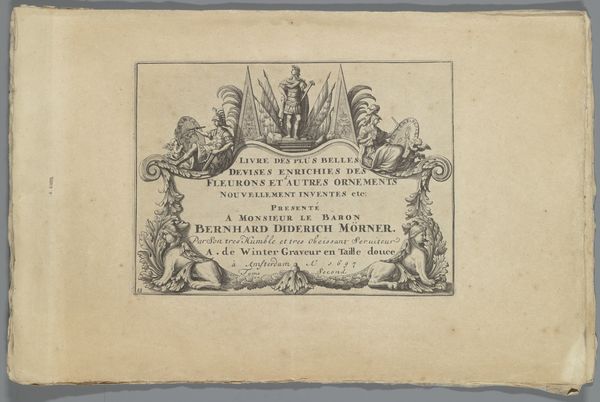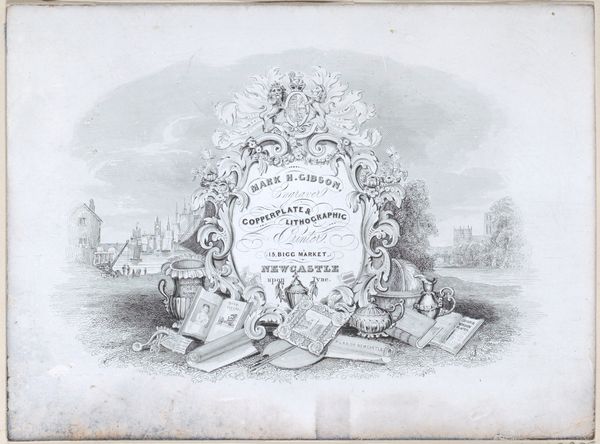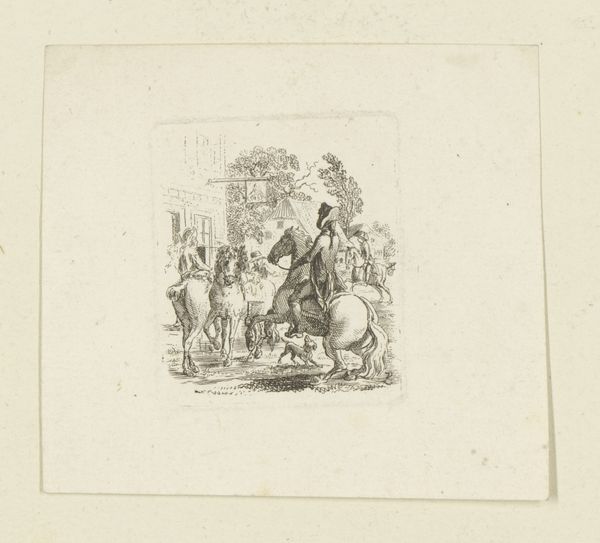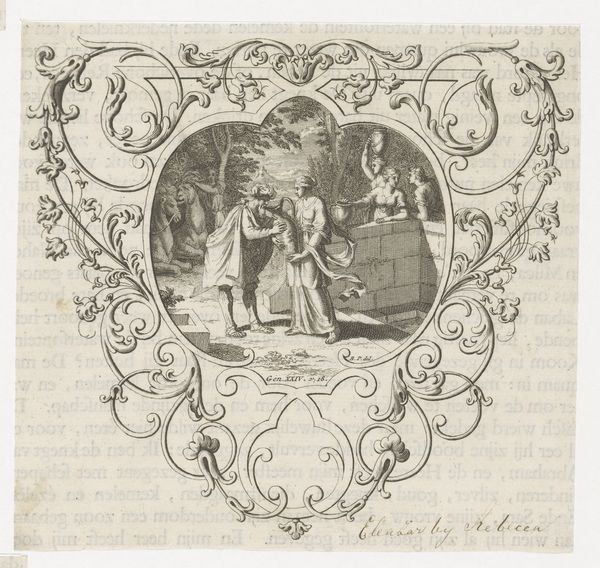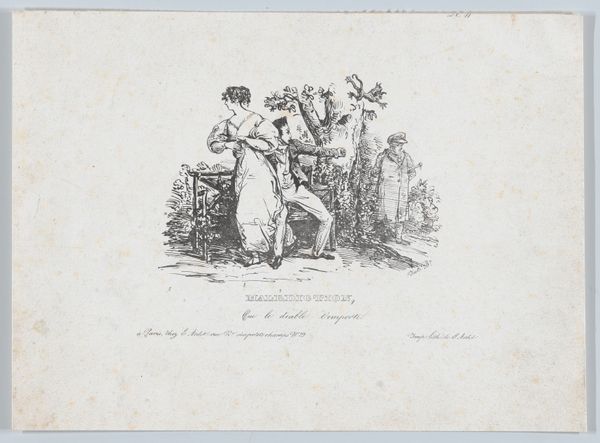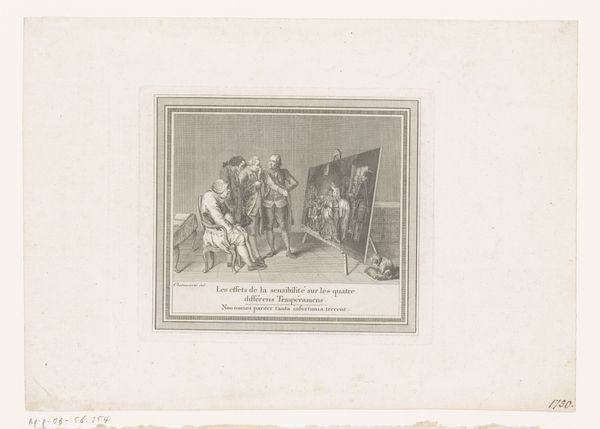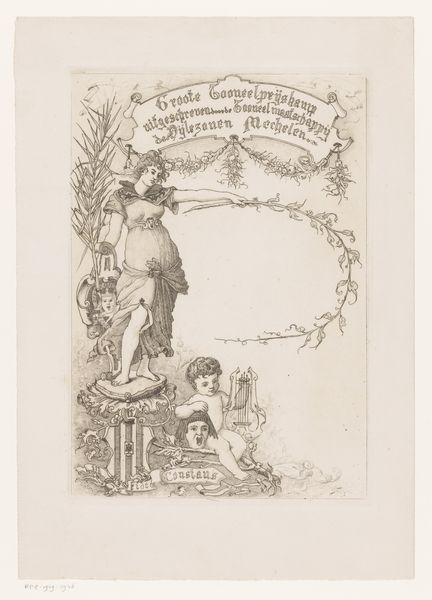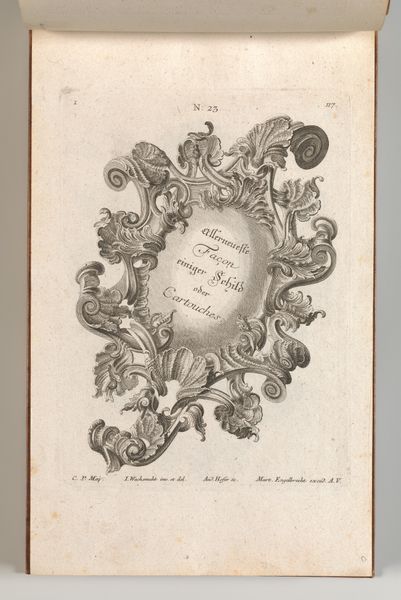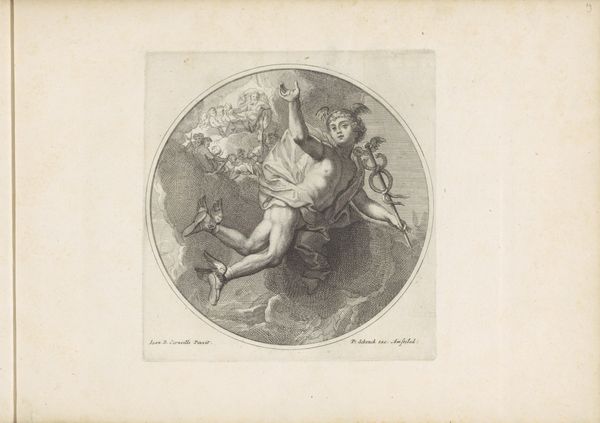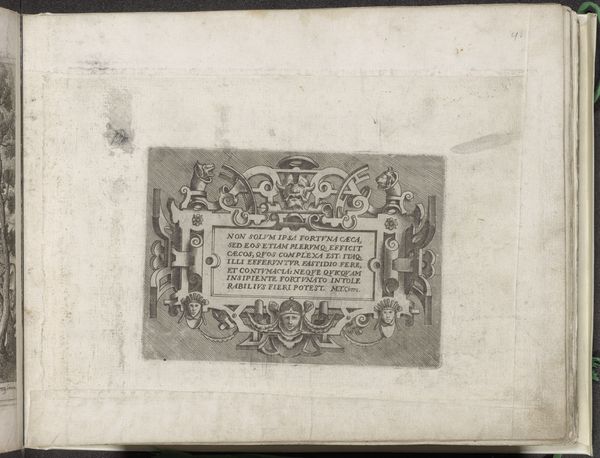
drawing, graphic-art, print, engraving
#
drawing
#
graphic-art
#
neoclassicism
# print
#
old engraving style
#
engraving
Dimensions: Sheet: 4 11/16 × 5 7/16 in. (11.9 × 13.8 cm) Plate: 2 15/16 × 4 3/4 in. (7.5 × 12 cm)
Copyright: Public Domain
Editor: This is a trade card for T. Palser, a print seller in Lambeth, dated somewhere between 1800 and 1900. It’s an engraving, currently held at the Metropolitan Museum of Art. What strikes me are the cherubs holding the sign – quite a statement for advertising. What do you make of this piece within its historical context? Curator: It’s fascinating how seemingly simple objects like trade cards reveal so much about the cultural and economic landscape of their time. Consider the explicit appeal to “approved Ancients & Modern Masters.” Who gets to decide who's ‘approved’ and how might that influence the tastes, or buying habits, of the consumer? Editor: So, it’s not just about selling prints, but also about shaping perceptions of artistic value? Curator: Precisely! The “pleasing Collection of Paintings on various Subjects” phrase is also interesting. What do we learn by who exactly is being courted to be a patron here? How does this relate to the rise of art collecting in Britain at the time and the establishment of art institutions? Editor: It sounds like the democratization of art access was already underway. With printing available, art slowly was getting accessible to the broader audience. But the reference to "British Collections & Dealers," is striking, it seems geared towards solidifying a domestic art market. Curator: Exactly. Notice the neoclassical style as well; even in commerce, invoking that aesthetic connects T. Palser’s business to established, 'legitimate' artistic traditions. This trade card isn’t just an advertisement; it's a social document! It presents very subtly how visual and economic networks work in conjunction. What will you take away from this work? Editor: Definitely that even seemingly mundane items reflect a lot about art patronage. It is definitely very indicative of the political and economic conditions in Britain at the time, but perhaps in all times as well.
Comments
No comments
Be the first to comment and join the conversation on the ultimate creative platform.

